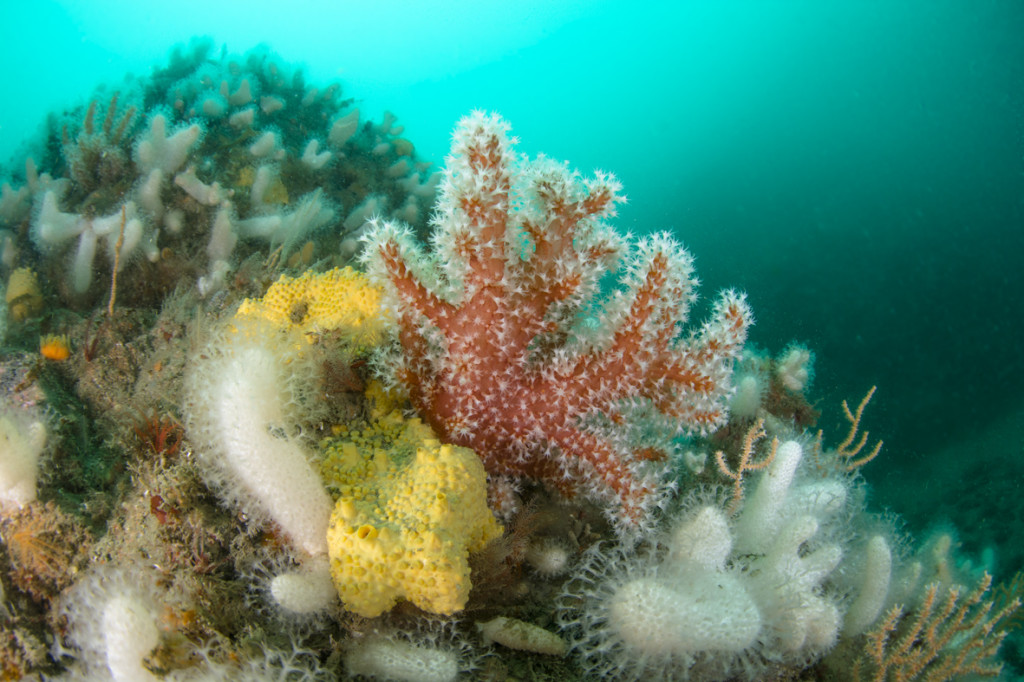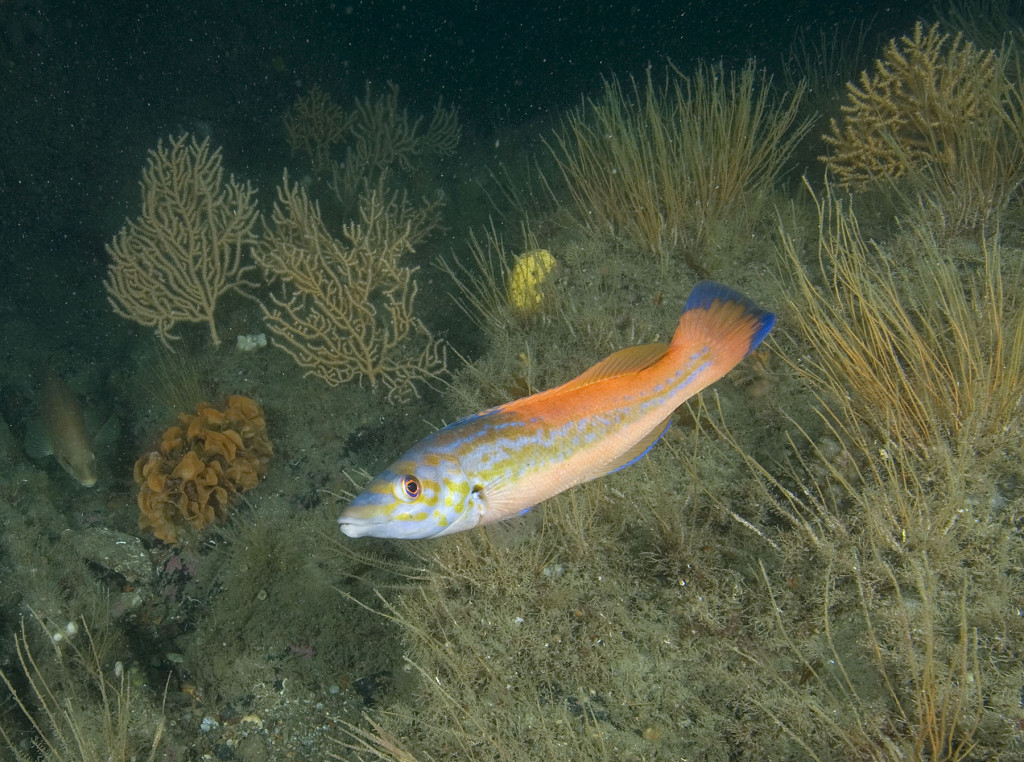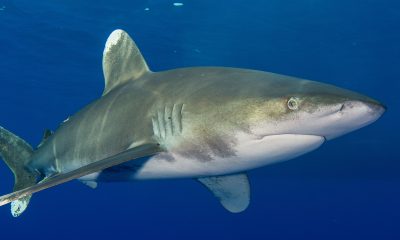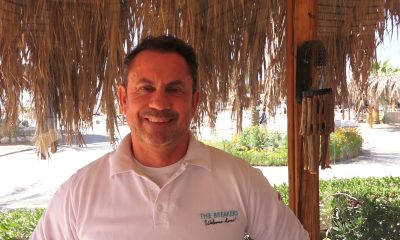News
Marine Conservation Zone in Cornwall under threat from Super Quarry
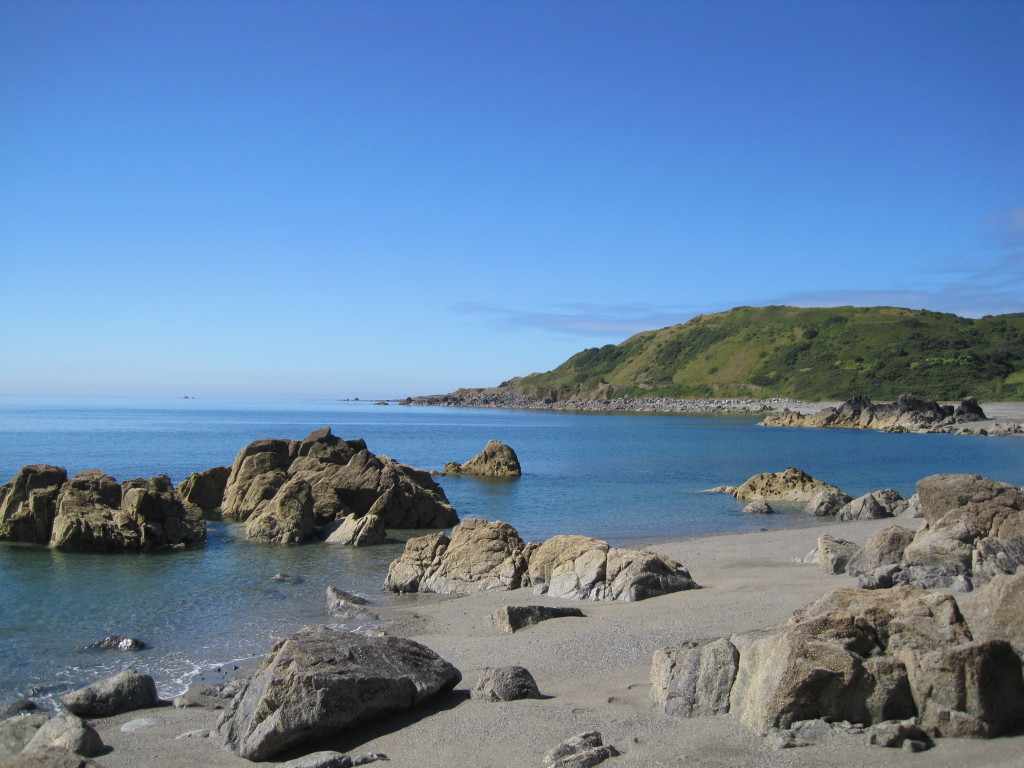
Once again, industry seems to be flying in the face of conservation and the concerns of local people. Two companies, Shire Oak Energy and Shire Oak Quarries are trying to open a dormant quarry (Dean Quarry) which is situated on the beautiful Lizard Peninsula in Cornwall. The environments in which we live throughout the world are continually being destroyed in the name of short term profit and thoughtless greed. Once again the wishes of a local parish council seem to be being over ruled by County Council. Why are large companies allowed to over rule the wishes of local people and why is the time and money used in setting up protected areas wasted so easily? As we progress into the 21st century I always hope we can learn from past mistakes and protect precious environments that make our own living spaces so special. So often I am proved entirely wrong.
If you would like to help stop this destructive development then get involved and let your voice be heard.
I contacted Jo from Porthkerris Divers who operate in the area to ask her about the project. This is her reply:
The story so far….
Director (and majority share holder) of Shire Oak Energy and Shire Oak Quarries, Mark Shorrock, is also director (and shareholder) of several companies linked to the Quarry (Tidal Lagoon Power, Dean Quarry Mineral Rights, Tidal Lagoon Swansea etc). They propose to excavate 1.5 million tonnes in the first year alone, although figures are forever changing. Previous quarrying at its maximum was no more than 200,000 tonnes a year. The quarry has been dormant since 2008. The stone is to be used to build the proposed tidal lagoon in Swansea and possibly others, should permission be granted to build them, ironically in the name of “green energy” (“energy which is produced in a way that PROTECTS our natural environment”)!!
The company, Shire Oak Quarries has already submitted a land based planning application (security fencing, explosives store, buildings etc.). Although it was turned down by the Local Parish Council, it was approved by Cornwall Council.
The next step is that the company Shire Oak Energy are soon going to submit an application to build a 535m long 50m wide breakwater and jetties within the Manacles Marine Conservation Zone (MCZ) which borders the old quarry, so that they can load 10,000 tonne barges 24/7.
Many people and organisations have huge concerns about this project and particularly the breakwater and jetties within the actual MCZ. The quarry is only a few hundred meters from houses and the local primary school in the village of St Keverne. We have been told by Mark Shorrock – in a public meeting on 30th January in front of a village hall packed with worried locals – that if he didn’t get the permission for his breakwater and jetties that he would drive all the stone out through the village in lorries, past the primary school, houses, popular tourist attractions etc. For the amount of stone that they are wanting to extract a year, that would mean several hundred lorries a week.
The Manacles MCZ, where they want to build the breakwater, is renowned for its fast flowing tidal currents and clear waters, supporting an amazing range of marine life – jewel anemones, sea fans, mearl beds, plumose anemones, spiny lobster, etc. It is a perfect, protected breeding ground for many types of fish. The manacles MCZ is also an important area for marine mammals and the internationally protected basking shark, which are highly sensitive to noise. How will blasting, loading of the 10,000 tonne barges 24 hours a day etc. affect them? What effect will the breakwater have on currents and sediment transport processes? What effects will the day-to-day operations have on redistribution of sediments? The proposal is to bring in several 10,000 ton barges per week, which will have to be moved by tug boats. We would question how the propeller action of the tugs will interact with tidal and wave action to redistribute the sediment around the manacles MCZ.
The Manacles is also an extremely treacherous shipping area (hence the large number of shipwrecks in the area). Navigating the inner manacles with 2 tugs guiding a 10,000 tonne barge laden with rock armour several times a week, is surely an accident waiting to happen.
And talking of Ship wecks, the position of the actual breakwater is right on the site of a famous shipwreck called “The John”, which went down in 1855 with a loss of 194 lives (There is a whole website dedicated to it which you can find here). Not far from the breakwater also lies the famous shipwrecks ‘The Mohegan’, The ‘Andola’ and ‘The Spiridian Vagliano’ and the war ship ‘The Primrose’.
It is essential that the few areas of relatively pristine marine habitat we have left remain properly protected. Many conservation organisations and leading academics are already very concerned about the government’s failure to deliver the full network of MCZs that were recommended by the scientific community. The Manacles MCZ is one of only 27, out of 120 proposed. Luckily there are now calls for more to be designated… but it is important that we are able to also protect the ones already in place; otherwise, what is the point?
The proposed development of a breakwater and general up-scaling of operations at Dean quarry is therefore not only the first real test of what it means to be a MCZ, but will also be under intense scrutiny from conservation groups and the marine science community. The manacles MCZ looks set to serve as an important test case. This is the first major challenge to a MCZ and could set a precedent for the others.
So many people are very concerned about the proposed development and how it could negatively affect lives and livelihoods, health, safety, the environment, the AONB, SW coast path etc etc, but unfortunately a lot of people are not aware of the impacts on life under the sea. Now would be a great time to raise awareness of this particular issue, so that when this next application is made, people will have a better understanding of what is at stake.
The first stages of the plans have been covered by the following publications:
Daily Telegraph:
Daily Mail:
Others:
https://www.google.co.uk/?gws_rd=ssl#q=dean+quarry&tbm=nws
For more information, visit www.cads2015.com, or find the ‘Community Against Dean Superquarry’ on Facebook. For Marine Management Organisation plan documents, downloadfrom: https://marinelicensing.marinemanagement.org.uk/mmo/fox
Blogs
Northern Red Sea Reefs and Wrecks Trip Report, Part 2: Wall to Wall Wrecks

Jake Davies boards Ghazala Explorer for an unforgettable Red Sea diving experience…
The second day’s diving was a day full of wreck diving at Abu Nuhas, which included the Chrisoula K, Carnatic, and Ghiannis D. The first dive of the day was onto the Chrisoula K, also known as the wreck of tiles. The 98m vessel remains largely intact where she was loaded with tiles which can be seen throughout the hold. The stern sits at 26m and the bow just below the surface. One of the highlights of the wreck is heading inside and seeing the workroom where the machinery used for cutting the tiles are perfectly intact. The bow provided some relaxing scenery as the bright sunlight highlighted the colours of the soft coral reef and the many reef fish.

Following breakfast, we then headed to the next wreck, which was the Carnatic. The Carnatic is an 89.9m sail steamer vessel that was built in Britain back in 1862. She ran aground on the reef back in 1869 and remains at 27m. At the time, she was carrying a range of items, including 40,000 sterling in gold. An impressive wreck where much of the superstructure remains, and the two large masts lay on the seafloor. The wooden ribs of the hull provide structures for lots of soft corals, and into the stern section, the light beams through, bouncing off the large shoals of glass fish that can be found using the structure as shelter from the larger predators that are found outside of the wreck.

The final wreck at Abu Nuhas was the Ghiannis D, originally called ‘Shoyo Maru,’ which was 99.5m long and built in Japan back in 1969 before becoming a Greek-registered cargo ship in 1980. The ship then ran aground on the reef on April 19th, 1983, and now sits at the bottom at a depth of 27m. Heading down the line, the stern of the ship remains in good condition compared to the rest of the hull. The highlight of the wreck, though, is heading into the stern section and down the flights of stairs to enter the engine room, which remains in good condition and is definitely worth exploring. After exploring the interior section of the ship, we then headed over to see the rest of the superstructure, where it’s particularly interesting to see the large table corals that have grown at the bow relatively quickly considering the date the ship sank. After surfacing and enjoying some afternoon snacks, we made sure everything was strapped down and secured as we would be heading north and crossing the Gulf of Suez, where the winds were still creating plenty of chop.

The next morning, it was a short hop to Ras Mohammed Nature Reserve for the next couple of days of diving. The 6am wake-up call came along with the briefing for the first site we would be diving, which was Shark & Yolanda. The low current conditions allowed us to start the dive at Anemone City, where we would drift along the steep, coral-filled wall. These dives involved drifts, as mooring in Ras Mohammed wasn’t allowed to protect the reefs. As a dive site, Shark & Yolanda is well-known and historically had a lot of sharks, but unfortunately not so many in recent years, especially not so early in the season. However, there was always a chance when looking out into the blue.

The gentle drift took us along the steep walls of the site, with plenty of anemone fish to be seen and a huge variety of corals. It wasn’t long into the dive before we were accompanied by a hawksbill turtle, who drifted with us between the two atolls before parting ways. Between the two reefs, the shallow patch with parts of coral heads surrounded by sand provided the chance to see a few blue-spotted stingrays that were mainly resting underneath the corals and are always a pleasure to see. With this being the morning dive, the early sunlight lit up the walls, providing tranquil moments. Looking out into the blue, there was very little to be seen, but a small shoal of batfish shimmering underneath the sunlight was a moment to capture as we watched them swim by as they watched us.

Towards the end of the dive, we stopped at the wreck of the Jolanda where the seafloor was scattered with toilets from the containers it was carrying. This provided a unique site to make a safety stop, which was also accompanied by a large barracuda slowly swimming by, along with a hawksbill turtle calmly swimming over the reef as the sun rays danced in the distance.
For the next dive, we headed north to the Strait of Tiran to explore the reefs situated between Tiran Island and Sharm El Sheik, which were named after the British divers who had found them. We started on Jackson before heading to Gordons Reef, where we also did the night dive. All the atolls at these sites provided stunning, bustling coral reefs close to the surface and steep walls to swim along, which always provided the opportunity to keep an eye out for some of the larger species that can be seen in the blue. Midwater around Jackson Reef was filled with red-toothed triggerfish and shoals of banner fish, which at times were so dense that you couldn’t see into the blue. Moments went by peacefully as we enjoyed the slow drift above the reef, watching these shoals swim around under the mid-afternoon sun.

The night dive at Gordon’s Reef was mainly among the stacks of corals surrounded by sand, which was great to explore under the darkness. After some time circling the corals, we came across what we were really hoping to find, and that was an octopus hunting on the reef. We spent the majority of the dive just watching it crawl among the reef, blending into its changing surroundings through changes in colour and skin texture. It’s always so fascinating and captivating to watch these incredibly intelligent animals, in awe of their ability to carry out these physical changes to perfectly blend into the reef. Before we knew it, it was time to head back to the boat to enjoy a well-deserved tasty dinner prepared by the talented chefs onboard.
Check in for the 3rd and final part of this series from Jake tomorrow!
To find out more about the Northern Red Sea reef and wrecks itineraries aboard Ghazala Explorer, or to book, contact Scuba Travel now:
Email: dive@scubatravel.com
Tel: +44 (0)1483 411590
Photos: Jake Davies / Avalon.Red
Marine Life & Conservation
Double Bubble for Basking Sharks

 The Shark Trust is excited to announce that, for two more days only, all donations, large or small, will be doubled in the Big Give Green Match Fund!
The Shark Trust is excited to announce that, for two more days only, all donations, large or small, will be doubled in the Big Give Green Match Fund!
Donate to Basking in Nature: Sighting Giants
The Shark Trust is hoping to raise £10k which will be doubled to £20k. This will go towards Basking in Nature: Sighting Giants. And they need YOUR help to reach they’re goal.
The Shark Trust’s citizen science project is to monitor and assess basking sharks through sightings; encouraging data collection, community engagement, and promoting nature accessibility. This initiative aims to enhance health and wellbeing by fostering a deeper connection with British Sharks.
Campaign Aims
- Increase citizen science reporting of Basking Sharks and other shark sightings to help inform shark and ray conservation.
- Provide educational talks about the diverse range of sharks and rays in British waters and accessible identification guides!
- Create engaging and fun information panels on how to ID the amazing sharks and rays we have on our doorstep! These can be used on coastal paths around the Southwest. With activities and information on how you can make a difference for sharks and rays!
- Promote mental wellbeing through increasing time in nature and discovering the wonders beneath the waves!
Donate, and double your impact. Click Here
-

 News3 months ago
News3 months agoHone your underwater photography skills with Alphamarine Photography at Red Sea Diving Safari in March
-

 News3 months ago
News3 months agoCapturing Critters in Lembeh Underwater Photography Workshop 2024: Event Roundup
-

 Marine Life & Conservation Blogs2 months ago
Marine Life & Conservation Blogs2 months agoCreature Feature: Swell Sharks
-

 Blogs2 months ago
Blogs2 months agoMurex Resorts: Passport to Paradise!
-

 Blogs2 months ago
Blogs2 months agoDiver Discovering Whale Skeletons Beneath Ice Judged World’s Best Underwater Photograph
-

 Gear Reviews3 months ago
Gear Reviews3 months agoGear Review: Oceanic+ Dive Housing for iPhone
-

 Marine Life & Conservation2 months ago
Marine Life & Conservation2 months agoSave the Manatee Club launches brand new webcams at Silver Springs State Park, Florida
-

 News3 months ago
News3 months agoWorld’s Best Underwater Photographers Unveil Breathtaking Images at World Shootout 2023


